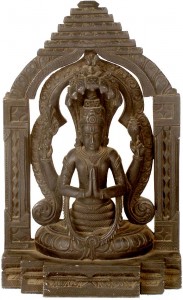Yoga is the ancient, physical, mental and spiritual discipline used to calm the mind and open the body. We offer a variety of classes to serve all levels of practitioner.

Yoga is the antidote to our hectic world in which our lives tend to be constantly moving at a very fast pace. Yoga practice allows us to unplug- literally from all of our electronic devices, but also from the constant spinning in our minds, which causes so much suffering in our lives. The various practices of yoga result in greater flexibility, strength and balance in the physical body, but possibly the greatest gift is the calming of the mind. With the nearly frantic pace of life these days, yoga creates a sanctuary of peacefulness and quiet, giving us time to look inward.
The Sanskrit word yoga translates as union. This union is that of mind and body, body and breath, self with higher power. What we commonly think of as yoga in the west is the Asana or posture practice, but posture practice is only one aspect of a complete yoga practice. The Yoga Sūtras of Patañjali are ancient teachings of yoga which include the Ashtanga or eight-limbed yoga instruction. This theory or philosophy of yoga includes many aspects of yoga beyond the postures that most of us are familiar with.
The Eight Limbs might better be described as eight steps on a path or eight spokes of a wheel in that they describe a lifestyle which includes practices that inform every aspect of our lives. The eight limbs include:
- Yamas,
- Niyamas,
- Asana,
- Pranayama,
- Pratyahara,
- Dharana,
- Dhyana and
- Samadhi.
The Yamas and Niyamas are all about ethics, looking at the the ways our thoughts, words and actions affect first ourselves; those that we can touch, family, friends, community; and the worldwide community. The Yamas and Niyamas include practices like honesty, cleanliness, non-stealing, discipline, non-greed, and most famously non-harming or non-violence.
Asana is the physical practice of yoga or the posture practice that we are most familiar with. The Asana practice teaches us to be present in our bodies as well as increasing flexibility, strength, balance and reducing stress. Pranayama is working with the Prana or vital life force of the body. Air or breath is the vehicle of Prana and in Pranayama practice, the breath is modified and controlled to increase and balance vital life force.
Pratyahara is learning to remove our attention from the senses so as not to be constantly distracted by sensory input. We turn our attention inward resulting in less reactivity to input and more awareness of how we chose responses instead of reacting mindlessly.
Dharana and Dhyana are about concentration and meditation practice. Dharana, the concentration practice, seeks to focus the mind on a single stimulus – a sound, a phrase, the breath etc.. Once we have mastered the concentration of the mind we move to Dhyana practice where we are able to stay present with all sensory input without wavering in the mind.
Samadhi is the experience of Oneness with all. This practice brings great, unreasonable joy and acceptance of whatever life presents.
One of the many goals of a yoga practice is to stop the spinning of the mind, allowing us to live in a place of calm acceptance, fully present and appreciative of the wonder of this life. This can only be accomplished by practicing all of the Eight Limbs as a life-long practice.
Documents:
The Yoga Sūtras of Patañjali Sanskrit-English (pdf)